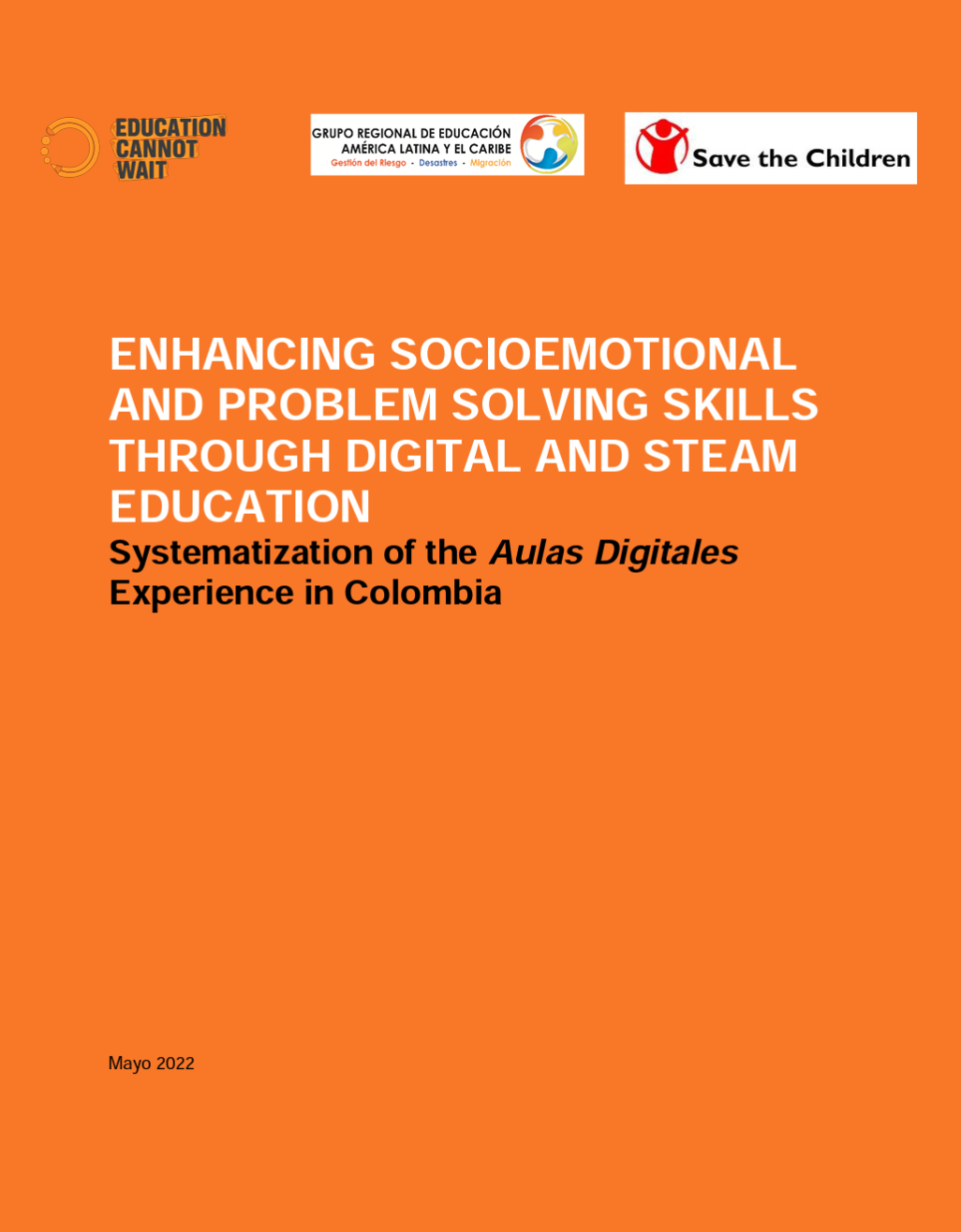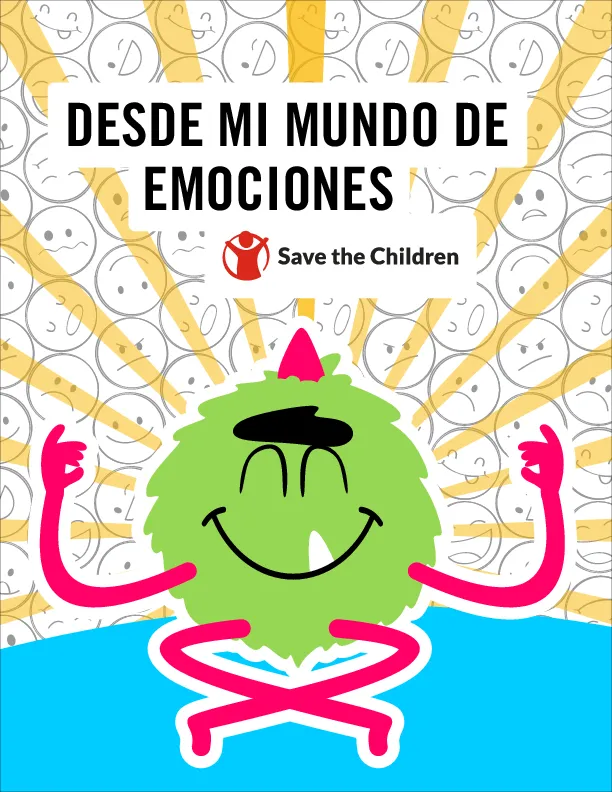
Reports
Enhancing Socioemotional and Problem Solving Skills Through Digital and STEAM Education: Systematization of the Aulas Digitales Experience in Colombia
Publication year:
2022
English
Format:
PDF (775.4 KiB)
Publisher:
Save the Children Colombia,Save the Children International
Aulas Digitales, or the Digital Classrooms project, was implemented by Save the Children in three departments along the Colombian border with the aim of developing socioemotional and problem solving skills for migrant and crisis-affected children ages 8 to 15. The project ran from 2021 to 2022 and engaged a range of stakeholders, including the Ministry of Education, the private sector, parents, and students. It involved in-person and virtual activities that promoted digital skills, socioemotional learning, and problem solving through programming, robotics, mobile apps, and video games.
Through a systematization effort of project activities and using the framework of UNESCO’s ‘five dimensions of the right to education,’ information was gathered in the project’s context, actions, achievements, success factors, challenges, lessons learned, and possibilities for replicability. Analysis of the five dimensions of the right to education revealed that the project most prioritized activities related to availability and accessibility.
The project combined traditional educational programming with Science, Technology, Engineering, Arts and Mathematics (STEAM) activities in programming, robotics, videogrames, and mobile applications. Despite challenges related to the COVID-19 pandemic, lack of access to and knowledge about the use of electronic devices and the internet, changes in project staff, and difficulties with service providers; the project succeeded in reaching over 500 crisis-affected children and adolescents. The project was supported by strong private and public sector alliances, the flexibility of the STEAM methodology, the mix of pedagogical and digital skills in staff, and a flexible donor funding structure. Analysis of lessons learned and discussion of project sustainability and replication can inform the continuation and/or expansion of the project within and beyond the Colombian, migrant, and informal educational contexts.
Read full abstract
View & Download
Document information
Format
Content type
Country
Region
Topics
Rights
© Author/Publisher
Found a mistake? Help us improve!
If you have noticed a document assigned to the wrong author or any other inaccuracies, let us know! Your feedback helps us keep our data accurate and useful for everyone.
Related Documents
Share
Link

